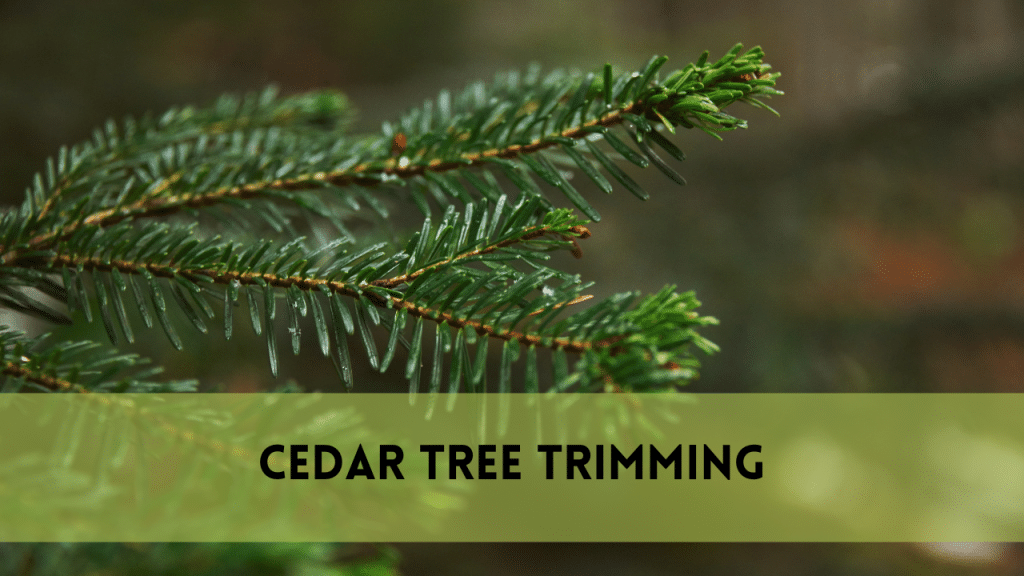Texas is renowned for its sprawling oak trees, providing shade and beauty to landscapes across the state. If you’re a proud owner of these majestic trees, you might be wondering, when to trim oak trees in texas? This crucial question often determines the health and vitality of your oaks, so let’s dive into the nitty-gritty of oak tree care.
Understanding Oak Tree Growth Patterns
Oak trees in Texas follow a distinct growth pattern influenced by the climate and weather conditions. Before delving into the ideal trimming times, let’s unravel the secret life of these magnificent giants.
Oak trees typically experience two growth spurts each year: one in spring and another in early fall. During these periods, the oaks are actively growing, developing new branches, leaves, and strengthening their overall structure.
When to Trim Oak Trees in Texas?
Now, let’s get to the heart of the matter. The optimal time to trim oak trees in Texas is during late winter to early spring. This period, typically from late January to early March, presents the perfect window of opportunity. Why? During this time, the oak trees are in a dormant state, which means they are not actively growing.
Trimming during the dormant season offers several advantages. Firstly, it minimizes stress on the trees since they are not expending energy on growth. This results in a faster healing process for the trimmed branches. Secondly, the absence of leaves makes it easier to assess the tree’s structure and identify problematic branches.
The Importance of Avoiding Trimming in Summer
While late winter to early spring is the prime time for oak tree trimming, it’s equally crucial to understand when not to prune. Summer, with its scorching temperatures in Texas, is a period when oak trees are highly susceptible to stress. Pruning during this season can lead to a weakened tree, making it more susceptible to diseases and pests.
Avoid the temptation to trim your oak trees in the summer heat. Instead, use this time to admire their full, lush canopies and focus on other aspects of tree care, such as proper watering and mulching.
Signs Your Oak Trees Need Trimming
Now that we’ve established the ideal trimming window, let’s explore signs that indicate your oak trees might need some attention sooner rather than later. Keep an eye out for:
- Dead or Diseased Branches: If you notice branches that lack leaves or display signs of disease, prompt removal is necessary to prevent the spread of infection.
- Crossing Branches: Branches that rub against each other can cause wounds, providing entry points for pests and diseases. Trimming these branches can enhance the overall health of the tree.
- Overcrowded Canopy: An overcrowded canopy inhibits sunlight penetration and air circulation, potentially leading to issues like fungal infections. Thinning out the canopy can mitigate these risks.
- Storm Damage: Texas weather can be unpredictable, and storms may cause branches to break or hang precariously. Prompt removal of storm-damaged branches prevents further harm.
The Art of Oak Tree Trimming
Now that you’ve identified the signs, let’s delve into the actual process of oak tree trimming. It’s crucial to approach this task with care and precision to ensure the health and aesthetic appeal of your trees.
- Start with the Three Ds: Begin by identifying branches that are Dead, Diseased, or Damaged. These should be your top priorities for removal, as they pose immediate risks to the tree.
- Create a Balanced Canopy: Aim for a well-balanced canopy to promote even growth and sunlight distribution. Remove overcrowded or inward-growing branches to achieve this balance.
- Maintain the Central Leader: For young oak trees, maintaining a central leader (the main upward stem) is vital for proper growth. Remove competing leaders to encourage a strong, central structure.
- Mind the Branch Collar: When making cuts, be mindful of the branch collar – the swollen area at the base of a branch. Avoid cutting into the collar, as it plays a crucial role in the healing process.
Tools to Trim Oak Trees in Texas
Equipping yourself with the right tools is essential for effective oak tree trimming. Here’s a brief list of tools you’ll need:
- Pruning Shears: Ideal for small branches and twigs.
- Loppers: Best for thicker branches that pruning shears can’t handle.
- Pruning Saw: Useful for larger branches that require a clean, precise cut.
- Safety Gear: Don’t forget gloves and safety glasses to protect yourself during the process.
FAQs
Can I trim my oak trees at any time of the year?
The optimal time for oak tree trimming in Texas is late winter to early spring, typically from late January to early March. This dormant period minimizes stress on the trees and promotes faster healing.
Are there any risks associated with trimming oak trees in summer?
Yes, pruning during the summer heat can stress oak trees, making them more susceptible to diseases and pests. It’s best to avoid trimming during this season and focus on other aspects of tree care.
How can I identify if my oak trees need trimming?
Look for signs such as dead or diseased branches, crossing branches, an overcrowded canopy, or storm damage. Promptly addressing these issues ensures the overall health of your oak trees.
What tools do I need for oak tree trimming?
Essential tools include pruning shears, loppers, a pruning saw for larger branches, and safety gear like gloves and safety glasses. Having the right tools ensures a safe and effective trimming process.
How do I maintain a balanced canopy during oak tree trimming?
Start by identifying and removing dead, diseased, or damaged branches. Then, focus on creating a balanced canopy by eliminating overcrowded or inward-growing branches, promoting even growth and sunlight distribution.
Conclusion
In conclusion, knowing when to trim oak trees in Texas is a key aspect of responsible tree care. By understanding the growth patterns, recognizing signs that indicate trimming is necessary, and employing proper techniques, you’ll contribute to the long-term health and vitality of your oak trees.
Remember, each tree is unique, so tailor your trimming approach to its specific needs. Regular observation, prompt action, and a dash of love will ensure your oak trees continue to grace your Texas landscape for generations to come. Happy trimming!






